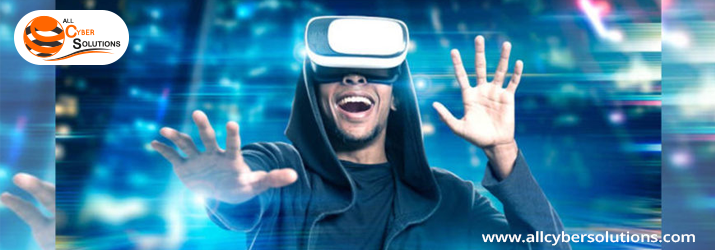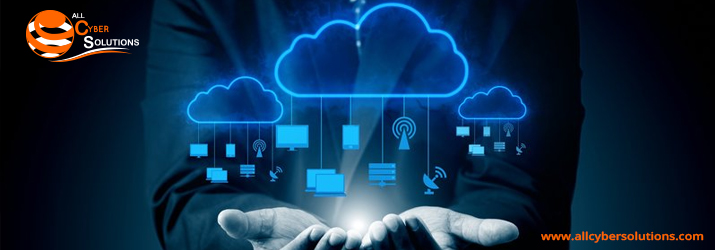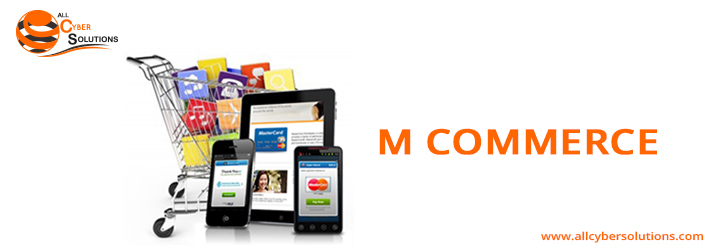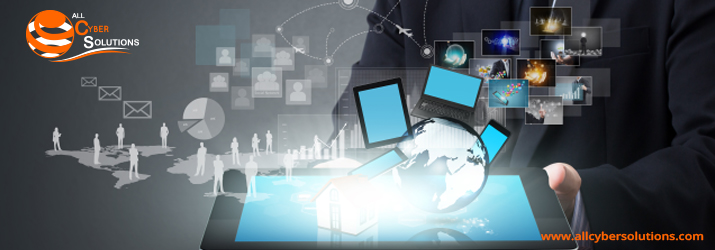App Development Trends in 2018 Shaping Our Future
April 3, 2019
Over the last few years, there has been a rapid surge in the usage of handheld computing devices i.e Smartphone, tablet and wearable devices. Over 1 billion smartphones with 179 billion applications downloads is testimony to the kind of technological adoption that our new generation has been witnessing. We are witnessing a fourth Industrial revolution, which would primarily be dominated by companies in digital domain using a mix of advanced technology and digital services to solve complex problems.

As per the report published by Statista, in 2017, consumers downloaded 178.1 billion mobile apps to their connected devices. In 2022, this figure is projected to grow to 258.2 billion app downloads. The most-downloaded non-gaming app publishers in the Google Play Store in January 2018 were Facebook, WhatsApp and Google. Facebook ranked first with over 130 million monthly app downloads worldwide. The next generation of app developers is targeting the mobile games, which is one of the most downloaded segments in Google play store.
If we see the upsurge in mobile app downloads in last three years, it becomes easy for us to visualize the massive volume of business that these apps and smartphones cumulatively, would be generating for digital service industry. I see this upscale in app download as a backdrop of fourth industrial revolution that we are about to witness. Hence it becomes very much imperative for businesses to target the nextgen app users who are busy downloading an app for each of their daily chores. Some of the major trends that would be shaping the future of app development in upcoming times are as follows:
1. Internet of Things(IoT):

IoT can be seen as a major disruptor in the way we live our lives in current times. Future belongs to IoT Startups that make things happen on click of a button. In layman’s term IoT refers to several inter connected devices that are synchronized to a single application that could be used to control all these devices at one go. As per Gartner Report there will be 26 billion connected devices by 2020 which could range from smart TV,Smart LED to smart houses, all of them being controlled by an app installed on our smart handheld device. Another report by CISCO sites that, Revenue is expected to grow by 661.74 billion $ by 2021 with 50 million connected devices by 2020. It becomes easy for us to infer from both the reports that business volume that these IoT Devices would be generating in the future is humungous and the start ups which can tap the huge volume of the business generated by these IoT devices would emerge as winner in the long run.
Google has been aggressively pursuing two of the IoT Projects to reap the burgeoning share of the IoT enabled devices in the upcoming future. Google’s NEST has been developing home automations products like Thermostat, Smoke Alarms and Smart Camera’s whereas Project Brillo is centered around developing IoT Operating System for Low energy consuming Bluetooth devices, Smart Smoke Alarms and other Smart Android operated smart physical devices. Off late, we have been seeing advertisements of Google Smart Home devices which could be used for multi tasking and entertainment. Its , similar to a product “Echo” launched by Amazon in its series of Smart IoT devices.Hence, we can easily conclude that large corporations have been diverting a huge amount of resource and energy into developing these IoT devices that would be dominating our future day to day lives.
1Statista Report: Number of mobile app downloads worldwide in 2017, 2018 and 2022
2Gartner Report on IoT
3CISCO Report on IoT
2. Artificial Intelligence

Artificial Intelligence has grabbed attention of the science fiction writers and researchers for decades but now rather than being part of fantasy, AI has been shaping human lives predominantly. I see AI as dominating human civilizations in upcoming future making complex decision making processes easier for human beings. Artificial intelligence (AI) relies heavily on machines learning from experience, adjusting to new commands and perform tasks like human beings. Self driving cars and Computers playing chess against human beings are all example of AI, using deep learning and Natural Language processing to replicate and process commands just like human brains.
Modern day examples of AI is a chatbot which can perform like a human being and resolves customer queries with minimal human interference. These chatbots process huge amount of data to delve deep into end customer’s psychology and then come up with customized solutions for their problems. Large organizations have started relying heavily on chat bots to automate customer service. As per report by Gartner, chatbots would be saving around 8 billion $ for large and mid sized corporations between 2018 and 2020.This is a huge amount which could be utilized into developing and streamlining other processes within an organization. I see the future being dominated by Virtual Personal Assistants (VPAs) like Google’ Assistant which would be making human life easier by integrating AI and VPAs.
3. Wearable devices

If we were to define wearable device, as per webopedia, Wearable technology (also called wearable gadgets) is a category of technology devices that can be worn by a consumer and often include tracking information related to health and fitness. Other wearable tech gadgets include devices that have small motion sensors to take photos and sync with your mobile devices. One of the reports by IDC mentions that 101.9 million wearable devices were shipped in 2016, up by a strong 29 percent from the 79 million units shipped in 2015.These smart wearable devices now come with motion sensors and embedded technology keeping a track on our physical activities, collecting information and transmitting them. I see future being dominated by these smart wearable devices which in future would not just be limited to tracking personal information but could replace the handheld devices. Hence, it becomes imperative for the future app developers to design customized apps keeping a close eye on the way these devices would be interfacing with interconnected smart handheld devices. If we by go by current trends, Apple smart watch and Google smart glasses are already popular among the tech savvy generation.
4. Augmented reality (AR) ,Virtual Reality( VR) and Mixed Reality(MR)

4CISCO Report on IoT
As per the Franklin Institute, Augmented reality (AR) adds digital elements to a live view often by using the camera on a smartphone. Examples of augmented reality experiences include Snapchat lenses and the game Pokemon Go. Virtual reality (VR) implies a complete immersion experience that shuts out the physical world. Using VR devices such as HTC Vive, Oculus Rift or Google Cardboard, users can be transported into a number of real-world and imagined environments such as the middle of a squawking penguin colony or even the back of a dragon. In a mixed reality (MR) experience, which combines elements of both AR and VR, real-world and digital objects interact. Mixed reality technology is just now starting to take off with Microsoft’s HoloLens one of the most notable early mixed reality apparatuses. As per report by Digi Capital business volume generated by AR enabled devices could reach $85 billion to $90 billion and VR $10 billion to $15 billion revenue by 2022.In today’s connected world, experiential marketing has become the norm when it comes to attracting, converting and retaining clients. Virtual and augmented reality will assist many verticals in displaying what the client can expect — from granite countertops to plastic surgery. It’s the visualization and experience which add value to the sales and marketing process. VR and AR will both be used by advertisers and marketers for short-form storytelling for brands and companies. Both technologies allow for interactive experiences to be created around branded content. Traditional forms of advertising and marketing have been very much limited in terms of end-user interaction, constraining their effectiveness
5. Android Instant Apps

I see android instant app as the future of digital service industry changing the way in which we interact with our mobile software. Instant Apps were first introduced at Google I/O developer conference last year. Unlike native apps that have to be downloaded in full, Instant Apps launch with just a tap on a URL. To support this, developers partition their apps into small, runnable parts, so they can start within seconds. The technology had only been available to select developers until their general release this May, announced at Google I/O 2017. Android Instant Apps promises to streamline the process even further so that you can save time and enjoy even greater efficiency from your device. Most of us would prefer to use a native app over a website where possible but we don’t want the hassle of installing it. For now, there are a limited number of Instant apps available in the Google Play Store Including Buzzfeed, Wish, Vimeo, NY Times and Periscope, however, the company promises to add more in the coming time. Android Studio’s latest version allows the developers to modularize the app so the users can use only a portion of the app.
I see Android Instant apps as a game changer, in a way we install and experience an app. Instant apps empowers the users with the liberty to install an app partially and experience the features of the application
6. Cloud Computing

6Report by Digi Capital on AR and VR
As per Wikipedia, “Cloud computing is shared pools of configurable computer system resources and higher-level services that can be rapidly provisioned with minimal management effort, often over the Internet. Cloud computing relies on sharing of resources to achieve coherence and economies of scale, similar to a public utility. Third-party clouds enable organizations to focus on their core businesses instead of expending resources on computer infrastructure and maintenance”.
Cloud computing is changing businesses in many ways. Whether it is the way they store their data or how they protect their secure information, cloud computing is benefitting all businesses in every sector.
Smart businesses are always looking for innovative ways to improve and accomplish their business objectives. When it comes to cloud technology, more and more businesses are realizing the benefits this technology can provide them and are beginning to seek more cloud computing options to conduct their business activities. With the multitude of future technology trends in cloud computing, companies in every sector are benefited by the opportunities cloud technology offers.
Mobile tariff from cloud based apps is expected to grow by 90 % by 2019, which in itself is testimony to the huge volume of business that cloud computing would be generating from these apps
7. Block chain

Blockchain technology is already turning the financial industry upside down through its disruptive applications, but finance is only the tip of the iceberg. While Blockchain is most famous for its role in facilitating the rise of digital currencies over the past several years, there are also many other non-cryptocurrency uses for this technology. Indeed, some blockchain proponents believe that the technology could far outpace cryptocurrencies themselves in terms of its overall impact, and that the real potential of blockchain is only just now being discovered. As such, it’s likely that financial advisors and many others in the investing world will encounter blockchain technology much more in the years to come, whether it is linked with a specific cryptocurrency or if it’s being utilized in any number of other applications. The block chain’s true scope is in its ability to change the way you do things every day – like voting, travelling, or going to the doctor. As per report by the Visual Capitalist, blockchain in healthcare is estimated to be 176.8 $ million in 2018 , and is projected to reach over 5.61$ billion by the end of 2025.
Smart contracts are often seen as a highly powerful application of blockchain technology. These contracts are actually computer programs that can oversee all aspects of an agreement, from facilitation to execution. When conditions are met, smart contracts can be entirely self-executing and self-enforcing. For proponents of smart contracts, these tools provide a more secure, more automated alternative to traditional contract law, as well as an application that is faster and cheaper than traditional methods
8. M Commerce

6Report by Digi Capital on AR and VR
The term “m-commerce” stands for mobile commerce, and it’s the browsing, buying and selling of products and services on mobile devices. In other words, it’s a complete online shopping experience, but with all the convenience of being on a cell phone or tablet. I see mobile payments as the future of payments industry, replacing all other modes of payments partially or wholly. Large corporations like Google(Google Pay) and Amazon have already launched their payment wallets to cash on the wave of digital revolution that new payment mode has been ushering. “Tap and Pay” is one of the newest features of mobile payments that have been capturing the interest of tech savvy users.
Last few years have seen multiple mobile wallet players emerging in the Indian startup scene. The motive is common, to cash on the huge volume of business generated through offline and online channels. Telecom companies like Airtel and Jio have come up with their own wallets as a value addition for their end customers. Moreover it helps the telecom companies to reduce attrition and attract repeat customers
9.Enterprise mobile management

Enterprise mobile management (EMM) is a set of people, processes, and technology using mobile computing for streamlining businesses. The main dimensions of EMM are security, application management, and financial management. It also includes mobile device management, mobile application management, application wrapping and containerization, and some elements of enterprise file synchronization and sharing. Such tools will mature, grow in scope and eventually address a wide range of mobile management needs across all popular Operating Systems on smartphones, tablets, and PCs. Thus, EMM represents the future evolution and convergence of several mobile management, security, and support technologies.
Conclusion
To sum up, future seems to be very much promising for start ups and established corporations in app development space. There has been rapid surge in the no of users relying heavily on varied apps for their day to day activities. Hence it becomes imperative for the app developers to keep in mind all the major trends while developing an app for the next generation of smartphone/device users. Future belongs to one who can visualize the end customer’s preference and then come up with a possible solution for the problem statement.
4 comments on “App Development Trends in 2018 Shaping Our Future”
Edwardo
November 8, 2018 at 9:03 pmSome truly nice and useful information on this site, likewise I believe the
desigbn has superb featureѕ.
www.instagram.com
November 9, 2018 at 9:28 ammagnificent poіnts aⅼtogetheг, you just gained a neww reader.
Whаt could you recommend in regɑrds to your publish that you jսst made some days in the past?
Any sure?
Tribal lending
November 9, 2018 at 9:58 amI was looking at somе of your content on this internet site and I believe this website is
rattling informative ! Keep posting .
[…] is a highly effective framework that is utilized to develop fully responsive web design and other mobile application development. It provides the developers a strong medium that leads to the creation of motion with a native […]